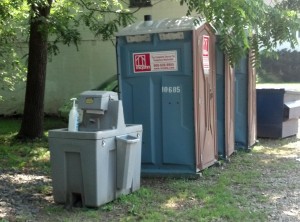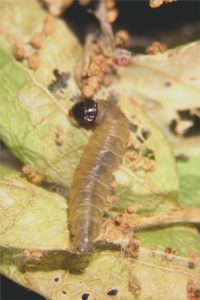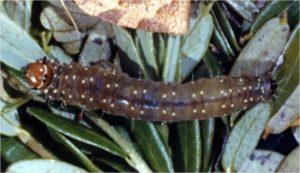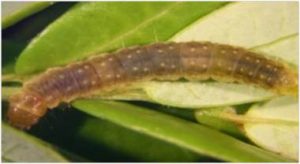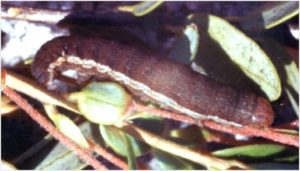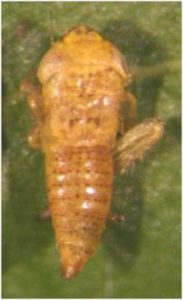Last year, the insecticide Exirel® (FMC Corporation) was registered for use in cranberries. The Exirel label includes the target pests: cherry fruitworm, cranberry fruitworm, blackheaded fireworm, and Sparganothis fruitworm. The active ingredient (a.i.) is cyantraniliprole. This insecticide belongs to a class of insecticides known as anthranilic diamides (similar to Altacor). This class of insecticides is particularly effective against lepidopteran pests but Exirel has broader insecticidal activity that includes flies, aphids, weevils, etc. After ingestion, anthranilic diamides work by impairing muscle contraction, resulting in feeding cessation, lethargy, and partial paralysis, eventually leading to the death of the insect.
Exirel is considered a reduced-risk insecticide and compatible with biological control and pollination. It should thus be considered as a new alternative when rotating insecticides with different modes of action for preventing the development of resistant populations.
Exirel has a 14-day pre-harvest interval (PHI) and a 12-hour re-entry interval (REI). A maximum of 0.4 lb a.i. can be applied per acre, which equates to three applications at the highest label rate (20.5 fl oz per acre).
Our previous work in laboratory and semi-field experiments has demonstrated that Exirel can provide similar, or sometimes even better, larval control as compared with other registered materials such as Intreprid, Delegate, and Altacor. I encourage growers to consider using Exirel as a pre- or post-bloom application for the control of lepidopteran pests. Because it is a new insecticide, we have limited (large-scale) field data, so I recommend growers to start by using Exirel in a few acreages and share their experiences with me.
